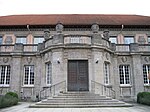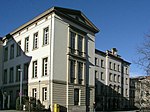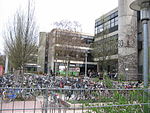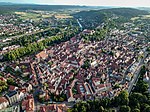Werner Reichardt Centre for Integrative Neuroscience
The Werner Reichardt Centre for Integrative Neuroscience (CIN) is the common platform for systems neuroscience at the University of Tübingen in Germany. It was installed as a cluster of excellence within the framework of the Excellence Initiative in 2007/2008. About 90 scientists with their research groups – 21 of which are currently supported with excellence initiative funds – form the CIN's membership. The focus of their work is on basic research in systems neurobiology. Based on an interdisciplinary and integrative approach, it encompasses projects rooted in biology, medicine, physics, computer science and engineering as well as cognition and neurophilosophy.The namesake Werner Reichardt pioneered research into the fundamental principles of vision and information processing.
Excerpt from the Wikipedia article Werner Reichardt Centre for Integrative Neuroscience (License: CC BY-SA 3.0, Authors).Werner Reichardt Centre for Integrative Neuroscience
Geschwister-Scholl-Platz,
Geographical coordinates (GPS) Address Website Nearby Places Show on map
Geographical coordinates (GPS)
| Latitude | Longitude |
|---|---|
| N 48.525 ° | E 9.0588888888889 ° |
Address
Neue Aula
Geschwister-Scholl-Platz 7
72074 , Universität
Baden-Württemberg, Germany
Open on Google Maps









